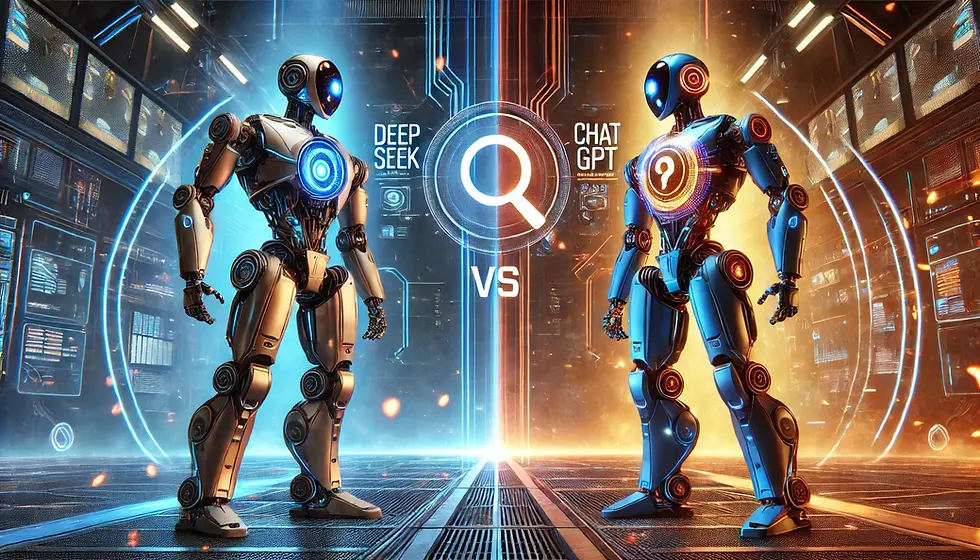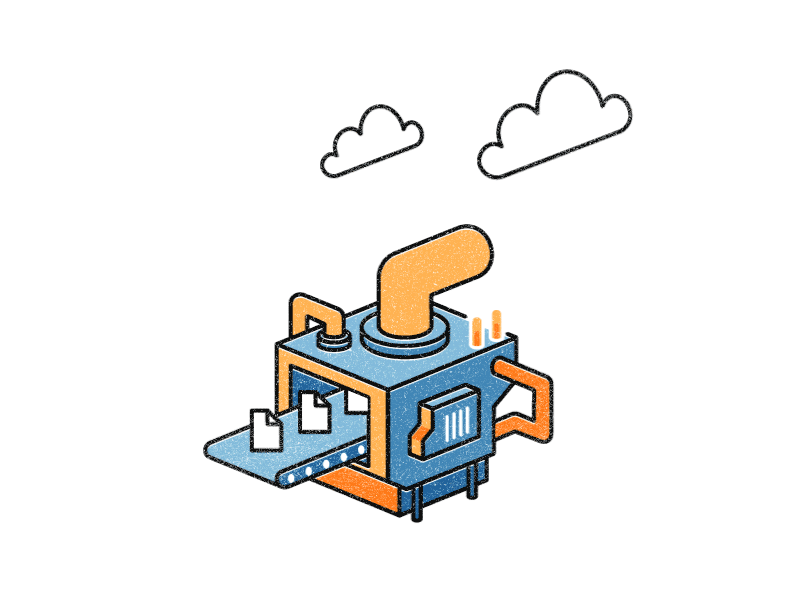DeepSeek vs. ChatGPT: A Benchmark and Performance Comparison
- Aryan Tah
- Jan 30
- 3 min read

Introduction
In the rapidly evolving field of artificial intelligence (AI), performance benchmarks play a crucial role. As AI models grow more sophisticated, understanding their capabilities and limitations is essential for researchers, developers, and users. These benchmarks indicate a model’s effectiveness in tasks like natural language processing and image recognition, allowing comparisons that reveal strengths and weaknesses.
This analysis compares DeepSeek-V3 and OpenAI’s ChatGPT (GPT-4o), driven by the increasing interest in diverse AI architectures and their real-world performance. As organizations seek optimal tools, understanding how these models compare is vital. By examining key performance metrics and neural architectures, we can appreciate the unique capabilities of each model.
My goal here will be to provide an overview of both models, highlighting their benchmark performance and architectural innovations. This insight will help users select the most suitable model for their needs and inspire further research in AI development.

Benchmark Performance
From the benchmark results provided, DeepSeek-V3 has outperformed many competing models across various tasks. It excels particularly in problem-solving domains like MMLU-Pro (75.9%) and MATH 500 (90.2%), showcasing its superior mathematical reasoning capabilities. Meanwhile, ChatGPT (GPT-4o) has demonstrated strong results, leading in areas such as SWE-bench Verified (50.8%), which assesses a model’s ability to handle software engineering-related tasks.
A deeper look at the results suggests that DeepSeek-V3 is optimized for mathematical problem-solving and technical reasoning, whereas GPT-4o offers well-rounded performance across multiple domains, including coding, general knowledge, and conversational AI.
Neural Network Architectures
DeepSeek-V3
DeepSeek-V3 is built on an advanced transformer-based architecture, leveraging an extensive number of layers, likely in the range of 70-80 layers, with billions of parameters. It integrates sparse attention mechanisms and Mixture of Experts (MoE) to enhance computational efficiency while maintaining high accuracy.
Key architectural innovations in DeepSeek-V3:
Sparse Attention Mechanisms: Reduces computational load while focusing on relevant context.
Mixture of Experts (MoE): Dynamically selects specialized subnetworks for different tasks.
Mathematical Optimization: Fine-tuned to handle symbolic reasoning, algebra, and logic-based problem-solving.
These enhancements allow DeepSeek-V3 to excel in structured reasoning and computational tasks.
ChatGPT (GPT-4o)
GPT-4o represents OpenAI’s latest advancement in dense transformer architectures. With over 100 layers, and has approximately 1 trillion parameters, it employs full attention mechanisms to maintain deep contextual understanding. Unlike DeepSeek-V3’s sparse approach, GPT-4o utilizes reinforcement learning from human feedback (RLHF) to refine its language capabilities.
Key architectural features of GPT-4o:
Dense Transformer Network: Ensures high fidelity in natural language processing.
RLHF Training: Incorporates human preferences to optimize responses.
Multi-domain Adaptability: Balances mathematical, logical, and conversational intelligence.
GPT-4o’s depth allows it to perform exceptionally well across diverse applications, making it a more generalized AI compared to DeepSeek-V3’s specialized focus.
Key Differences in Neural Processing
Depth and Complexity: GPT-4o has a deeper transformer architecture, enabling sophisticated language modeling, while DeepSeek-V3 is optimized for efficiency using sparse attention.
Mathematical and Code Proficiency: DeepSeek-V3 outperforms in mathematical reasoning due to targeted training, while GPT-4o maintains balanced performance across multiple fields.
Attention Mechanisms: DeepSeek-V3 employs sparse attention to improve efficiency, whereas GPT-4o relies on full attention for detailed contextual understanding.
Training Approach: DeepSeek-V3 leverages targeted training for technical subjects, whereas GPT-4o is trained with extensive RLHF to improve general conversational AI capabilities.
Real-World Applications
In today's technological landscape, advanced AI models are making significant impacts across various industries. Here are two notable examples of AI applications:
DeepSeek-V3: This model excels in fields requiring analytical capabilities, handling complex scientific computations and solving intricate mathematical problems. It is particularly beneficial in research, academia, and engineering, and assists in verifying mathematical statements through automated theorem proving.
GPT-4o: This model is versatile for various applications, especially in content creation, enabling quick generation of high-quality text. It enhances customer service through intelligent dialogue systems and supports software development by generating code snippets and providing documentation.
Conclusion
Both models showcase significant advancements in AI technology. DeepSeek-V3 excels in structured problem-solving, utilizing sophisticated algorithms to tackle complex mathematical problems and optimize solutions. Its architecture efficiently handles structured data, making it ideal for scientific research, financial modeling, and operations research.
In contrast, GPT-4o demonstrates strong general performance across various benchmarks, excelling in natural language understanding and generation. It is particularly effective for conversational AI, content creation, and software engineering tasks, making it suitable for customer service and educational tools.



Comments